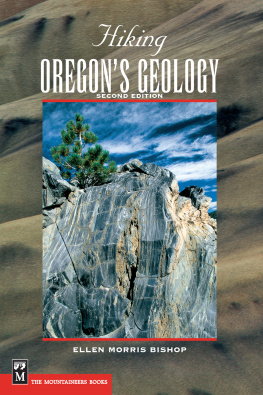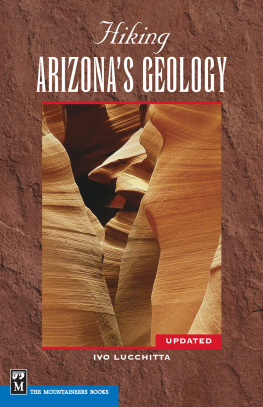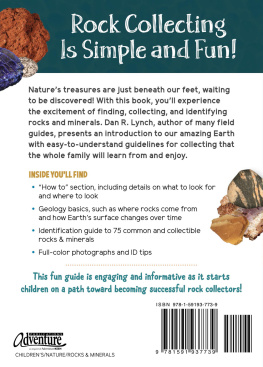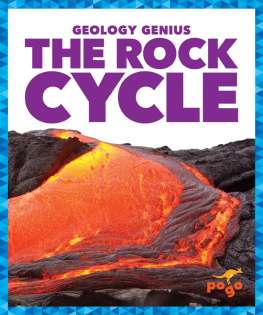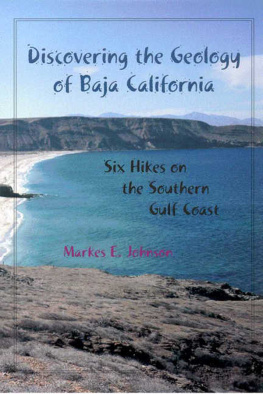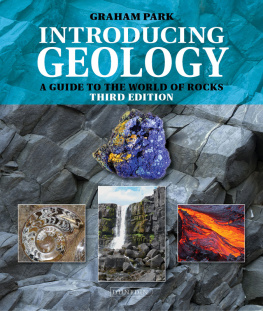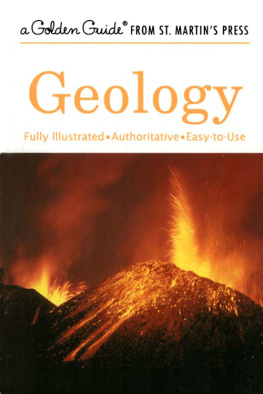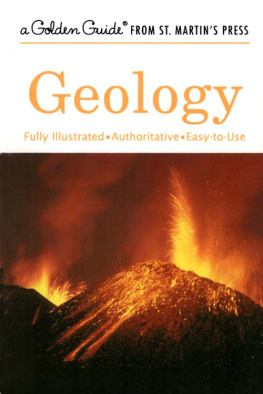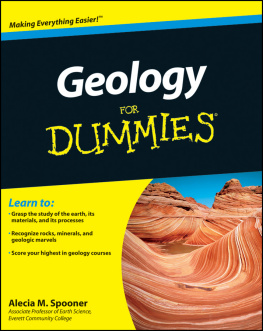Hiking
OREGONS GEOLOGY
SECOND EDITION

Dedication
To Bob and Spirits Little Wolf, and all those who love wild places.
 | THE MOUNTAINEERS BOOKS
is the nonprofit publishing arm of The Mountaineers Club, an organization founded in 1906 and dedicated to the exploration, preservation, and enjoyment of outdoor and wilderness areas. |
1001 SW Klickitat Way, Suite 201, Seattle, WA 98134
2004 by Ellen Morris Bishop
Second edition: first printing 2004, second printing 2010
All rights reserved. No part of this book may be reproduced in any form, or by any electronic, mechanical, or other means, without permission in writing from the publisher.
Distributed in the United Kingdom by Cordee, www.cordee.co.uk
Manufactured in the United States of America
Project Editor: Margaret Sullivan
Copy Editor: Paula Thurman
Cover and Book Design: The Mountaineers Books
Layout: Ani Rucki
Cartographer: Warren Huskey
All photographs by the author unless otherwise noted.
Cover photographs: Closeup of clay surface, The Painted Hills, John Day Fossil Beds National Monument. Inset photo: Fold in obsidian at Big Obsidian Flow, Newberry Volcanic National Monument
Library of Congress Cataloging-in-Publication Data
Bishop, Ellen Morris.
Hiking Oregons geology / Ellen Morris Bishop and John Eliot Allen.2nd ed.
p. cm.
Includes bibliographical references and index.
ISBN 0-89886-847-5 (pbk.)
1. HikingOregonGuidebooks. 2. GeologyOregonGuidebooks. 3. OregonGuidebooks. I. Allen, John Eliot, 1908- II. Title.
GV199.42.O7B57 2004
917.95dc22
2003026888
ISBN (paperback): 978-0-89886-847-0
ISBN (ebook): 978-1-59485-161-2
Contents

Acknowledgments
Many friends contributed more than they know to this book, and without them this volume would still be in the netherworld of unborn books. John Eliot Allens guidance gave the book direction. Joe and Marge Bernard provided long-time logistic and moral support. Ted Brown provided expertise from the hikers perspective. Many geologists, especially Bev Vogt, Tracy Vallier, Ted Fremd, Mark Ferns, Terry Geisler, and Mike Cummings, contributed expertise. My energetic canine companionsAlaskan malamutes Wolf, Huffi, and Bear, and more recently Dundee, an Australian shepherd, and Meesha, a gentle border collie mixed breedinsisted that I get the hikes done. Most important, my husband Davids patience, encouragement, understanding, advice, support, and proofreading prowess brought this book from the shadows of an idea into the sunlight of reality. However, I take all responsibility for any errors or omissions of geologic facts, dates, or other information.
Ellen Morris Bishop
Preface
Few subjects transcend our modern, harried world as fully as geology. We are surrounded by stones that gauge time and tragedy in millions of years. When we consider the enduring history of the landscapes around us, many daily frustrations, from discourteous drivers to garden bugs, retreat into triviality. A hike that explores Oregons geologic history provides not only fresh air and stress-relieving exercise but also some comforting insight into what is truly significant and what might be laughably transient in the scope of geologic time.
This book is written for the geologic layperson. It allows me to share some places that I know and love, as well as a knowledge of Oregons long and distinguished past. Today, with a little imagination and geologic savvy we can visit tropical islands sequestered in the Wallowa Mountains, ancient volcanoes in the depths of Hells Canyon, the soils where dog-sized horses lolled in the oak-laden forests of the Painted Hills, muddy, clam-crowded sea bottom in the Coast Range, and glacially grooved Cascade valleys where ice once towered far above our heads.
But Oregons geologic history also provides us with valuable and urgent lessons that we should heed today, including the inevitability of global warming as methane and carbon dioxide levels rise and the finality of extinction. The doe-eyed ichthyosaurs entombed in Wallowa Mountain limestone and Cretaceous sediments near Mitchell were exterminated by a catastrophic meteorite impact 65 million years ago. Though they might have been well adapted to modern seas, they are simply gone. In the earths most severe extinction, 248 million years ago, at the end of the Permian period, methane and carbon-dioxide-driven global warming and changing sea levels coupled with meteorite impact eradicated 95 percent of life on the planet, including the Permian sea life now preserved as fossils in Hells Canyon. It behooves us all to consider the stories told by mute and stolid stones.
The best place to find Oregons geology and the stories that it tells is in the backcountry, among wild rocks. Few of these tales are finished. Many have yet to be found and told. Newcomers to the landscape and the science often bring new insight and ask unconventional questions, revealing a history that geologists with long acquaintance and too-practiced eyes may have overlooked. There is no such thing as a dumb question, especially when looking at landscapes and considering their history. And, as youll see, there is a lot of history to consider.
Introduction
Geology seems remote from our everyday concerns. What could ancient, inanimate rocks possibly have to do with modern ecosystems, with the lives and travails of salmon, or old growth, or highway congestion? Everything, as it turns out. For in geology there is an undeniable record of the finality of extinction, the devastating effects of climate change, and the displacement and chaos of ecosystems beset by invading exotic plants and animalsall threats to us today. Sea levels drop and 90 percent of marine species go extinct. The Permian extinction, 248 million years ago, provides an example. Increase atmospheric carbon dioxide sufficiently, and then warm the seas so formerly frozen methane hydrates are released as methane gas, and global temperatures rise, with normal daytime highs of 130 to 140 degrees Fahrenheit. As paleontologist Michael Benton of Oxford University has noted in The Book of Life (W. W. Norton & Co.; 1996), the planet experienced slow suffocation, while the land fell silent and the sea stagnated. It is all there in the geologic record of the Permian extinction and other geologic eventsas solidly written in stone as the Ten Commandments may have been.
And then there is this: although the dimensions and timescale of geology often seem far-removed from human experience, in fact we satisfy our every need from the earth. The air we breathe came first as gases from a cooling planet and is renewed each day by plants that depend on soils crafted from rocks. All our metals, concrete, plastics, fuels, and even wood and food supply come directly or indirectly from stone. Geology controls our water supplies. Groundwater follows some rock formations and is absent from others, is trapped in faults, and is funneled by joints. Rivers, creeks, and streamsand the ecosystems that depend upon themall follow the dictates of tectonics and rocks. To live well and wisely, we need geology.

